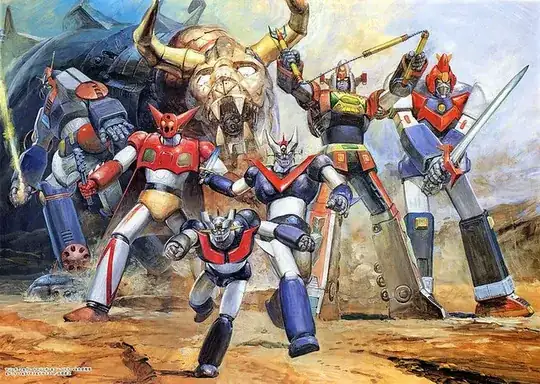The golden age of anime began in the 1980s with Mobile Suit Gundam and Space Battleship Yamato.
According to Wikipedia:
Mobile Suit Gundam (1979), the first Real Robot anime, was also initially unsuccessful but was revived as a theatrical film in 1982. The success of the theatrical versions of Yamato and Gundam are seen as the beginning of the anime boom of the 1980s, which many consider the beginning of the "golden age of anime". This anime boom also marked the beginning of "Japanese Cinema's Second Golden Age", which would last until around the beginning of the 2000s.
Mecha animes and space operas began becoming popular after Star Wars was released in 1977. The major players were Mobile Suit Gundam and Space Battleship Yamato in the beginning. Hayao Miyazaki released Nausicaä of the Valley of the Wind, which is considered one of the most influential anime of all time, during that time. His company became Studio Ghibli.
The introduction of the martial arts genre also happened in this time with the release of Dragon Ball in 1984. The anime fandom, filled with people known as otaku, began forming at this time, concentration on magazines such as Animage, which published Nausicaä of the Valley of the Wind, and Newtype. The sports genre also began in the 1980s with the release of Captain Tsubasa.
The beginning of OVA (Origial Video Animation) also happened in the 1980s, bringing anime to the home video market; the first OVA released was Moon Base Dallos.
The fall of the 1980s anime boom had a few causes. The first is that the success of Nausicaä led to an increase in experimental and high budget anime films. Many of these were relatively unsuccessful, not making up the exorbitant amount of money spent to create them. Royal Space Force: The Wings of Honneamise had a budget of ¥800 million and Akira had a budget of $11 million (which, if that is the 1988 budget, was approximately ¥1.408 billion). Neither of these films, along with many other experimental anime films, were box office successes in Japan, though Akira did bring in fans from the West. Because of these failures, many anime production companies began closing. Studio Ghibli was one of the only successful anime production companies at the end of the 1980s with the film Kiki's Delivery Service. These failures, along with the bursting of the economic bubble and the death of Osamu Tezuka, a main player in the experimental anime field, lead to the fall of the 1980s era of anime.
Regarding the moe boom, according to this:
Another theory asserts that its usage stems from 2channel in the 1990s when the word was used to refer to female characters who were “hybrids of the Lolicon (lolita complex) and bishoujo (beautiful girls) genres,” Hotaru Tomoe from Sailor Moon being an early example of a moekko character.
In an article written by Patrick W. Galbraith of Tokyo University, Galibraith explores the origins and meanings behind the term “moe”. He states that the term originated from 2channel in the 1990s in the discussion of young, cute, and innocent girls and their burning passion for them. This term likely picked up because moeru (nominalized as moe) while meaning ‘to bud or sprout,’, is homophonous with the verb ‘to burn.’
The sexualization of underage (or underage-looking) characters in manga goes back to the late ’70s, when underground and adult manga artists such as Disappearance Diary creator Hideo Azuma began to work around censorship laws by drawing characters without pubic hair. This was the beginning of the lolicon (Lolita Complex) trend.
